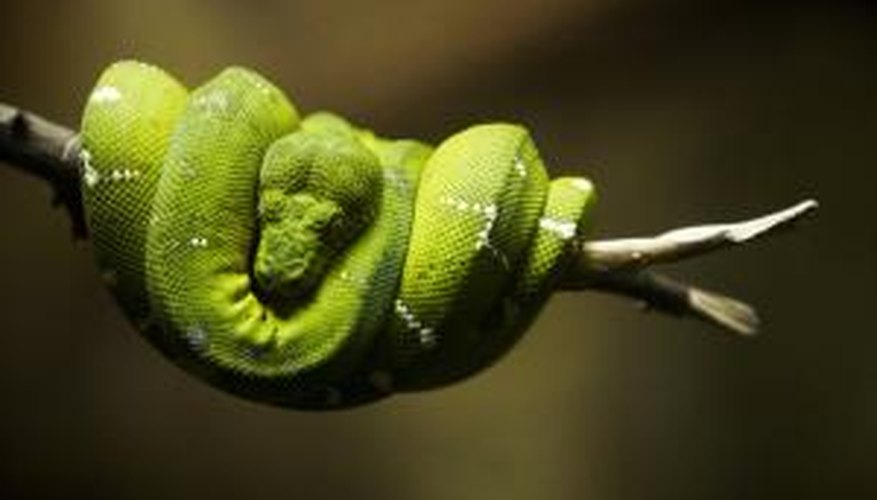A snake hook or snake stick is a simple handle, either telescopic or fixed like that of a golf club, with a curved prong at the end for handling snakes. Some snakes lend themselves to handling with a hook more readily than others. Relatively heavy-bodied snakes like rattlesnakes might rest on a hook with little or no protest. A nervous black mamba, on the other hand, may be difficult and very dangerous to handle, even with a hook. The hook generally makes handling easier and safer for both the handler and the snake.
Transferring
A snake hook is an essential tool for transferring poisonous snakes from one enclosure to another. Some snake keepers house multiple venomous specimens, and transferring them is a frequent and regular task. Cleaning cages, for instance, may require the snakes be moved two or more times a day. Other activities, like breeding or collecting venom, may call for even more handling. The snake hook, serving to lift, hold and transfer the snake, is indispensable for these tasks.
- A snake hook is an essential tool for transferring poisonous snakes from one enclosure to another.
- The snake hook, serving to lift, hold and transfer the snake, is indispensable for these tasks.
Pinning
There are times when snake handlers hold and handle a poisonous snake directly by hand. Oftentimes this means grasping the snake behind the head so it cannot bite. Some snake hooks have a flattened portion near the tip of the hook. This facilitates pinning the snake's head down on a flat surface without harming it. With a snake pinned using the hook, the handler can then secure the snake behind the head relatively safely.
- There are times when snake handlers hold and handle a poisonous snake directly by hand.
- With a snake pinned using the hook, the handler can then secure the snake behind the head relatively safely.
Hunting
Herpetologists -- scientists who study reptiles and amphibians -- often spend time in the field searching for specimens. Depending on the circumstances, the vast majority of the time can be spent searching with very little findings. In addition to handling the animals directly, the snake hook is very useful for pushing aside thick vegetation or for lifting small logs and the like. This aids in searching without bending over, or risking sticking a hand in where a poisonous snake may be hiding.
- Herpetologists -- scientists who study reptiles and amphibians -- often spend time in the field searching for specimens.
- In addition to handling the animals directly, the snake hook is very useful for pushing aside thick vegetation or for lifting small logs and the like.
Capturing
If herpetologists are successful in their hunting for snakes in the field, there will most likely be a capture. The snake hook is instrumental in capturing in the field, just as it is in transferring in captivity. An accessory that is sometimes used with the snake hook is the hoop bag or bag stick. The bag stick is a bit like an insect net. It has a handle and a metal hoop -- although often rectangular rather than round -- with an open cloth bag secured around the hoop or triangle. The objective is to use the hook to get the snake into the cloth bag without risk of injury to either the snake or the handler. Again, the snake hook is indispensable for this task.
- If herpetologists are successful in their hunting for snakes in the field, there will most likely be a capture.
Conservation
Responsible herpetologists, both professional and amateur, are conservation-minded and they respect the animals and their place in the ecosystem. Capturing snakes often involves studying and releasing, or relocating, back into the wild. Those who keep snakes in captivity often house captive-bred animals rather than putting pressure on wild snake populations.
